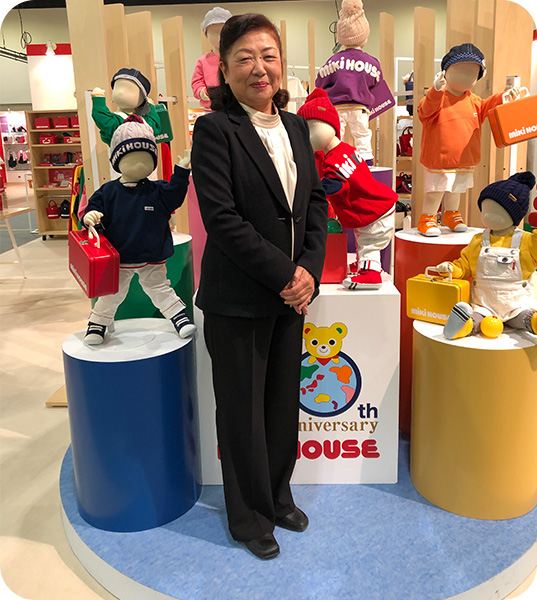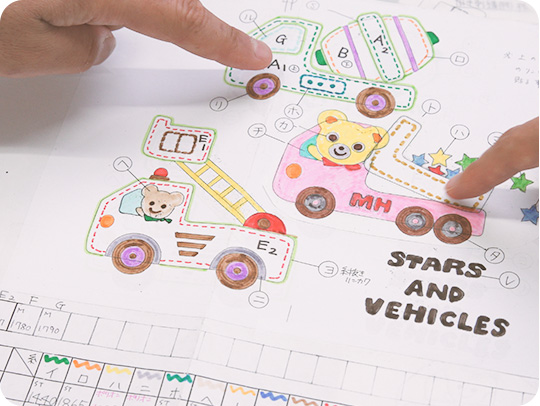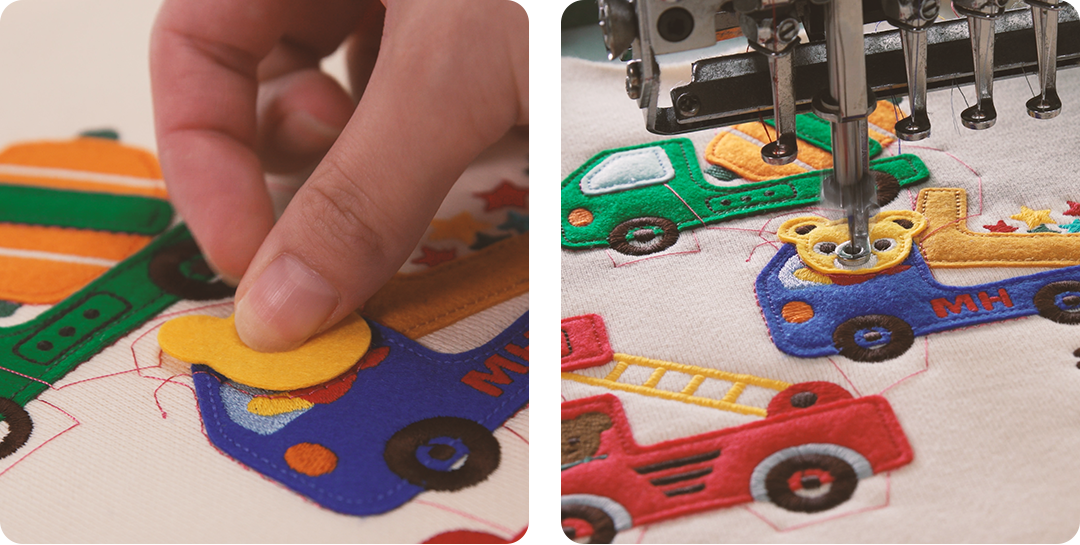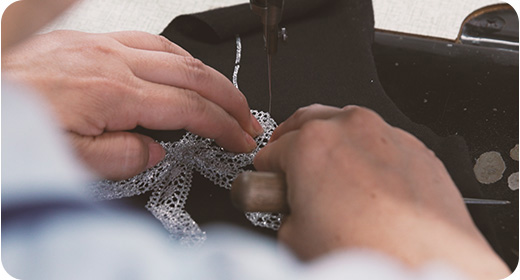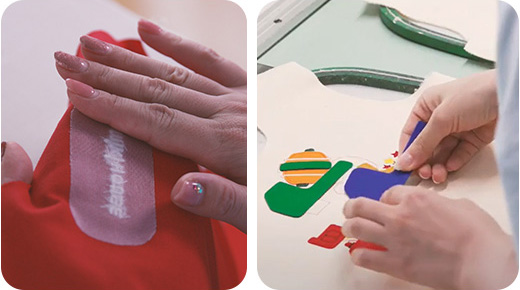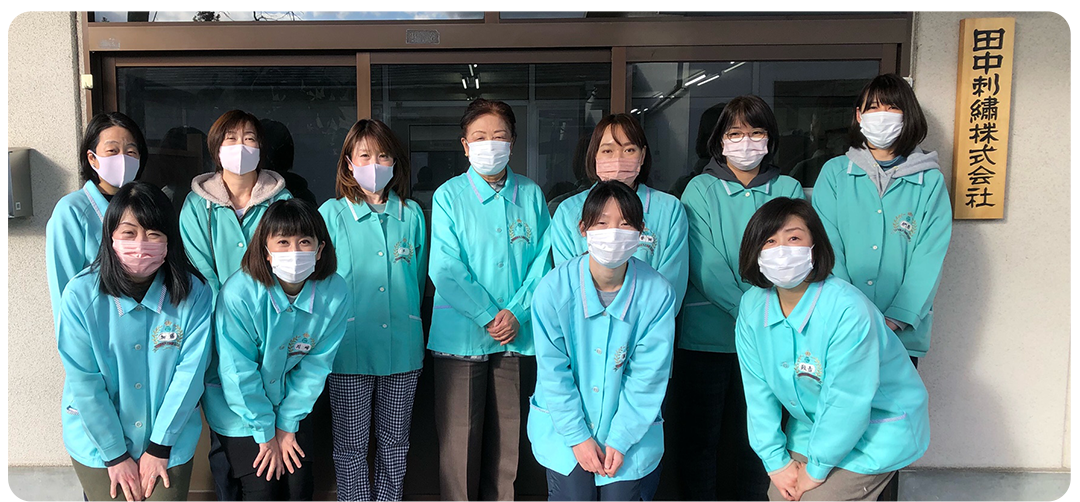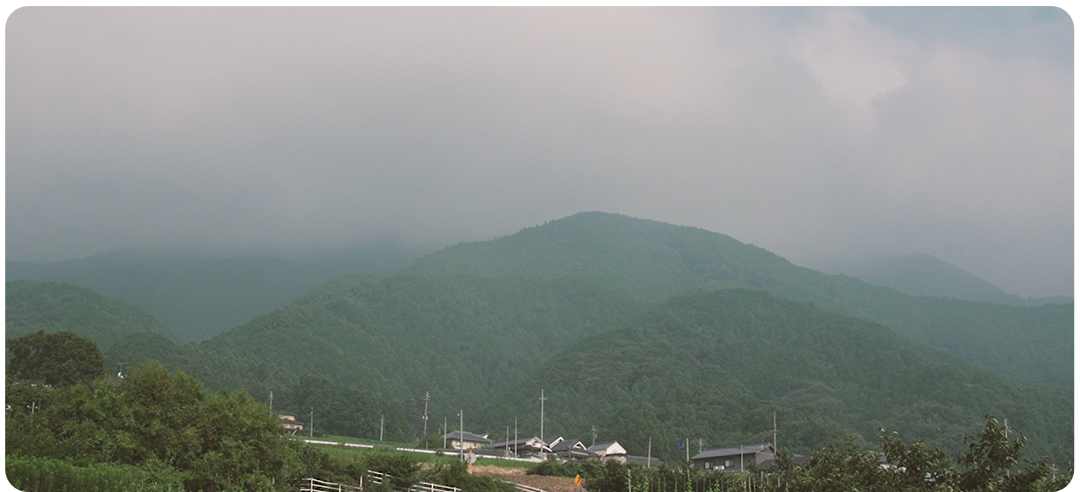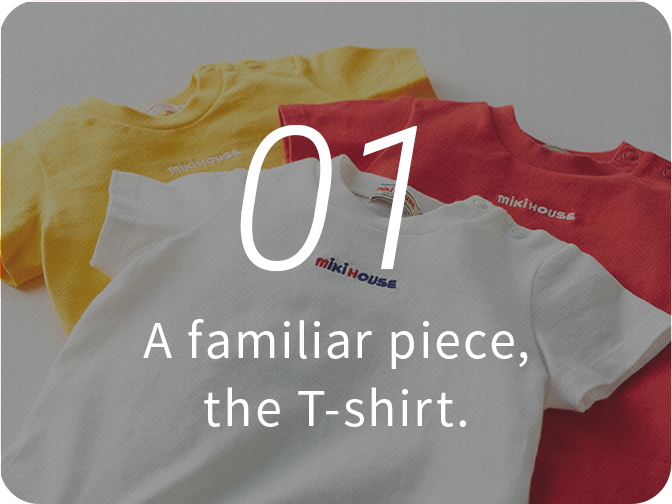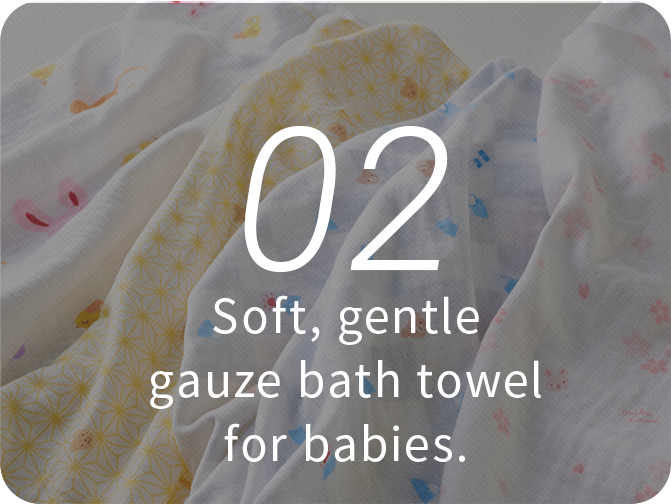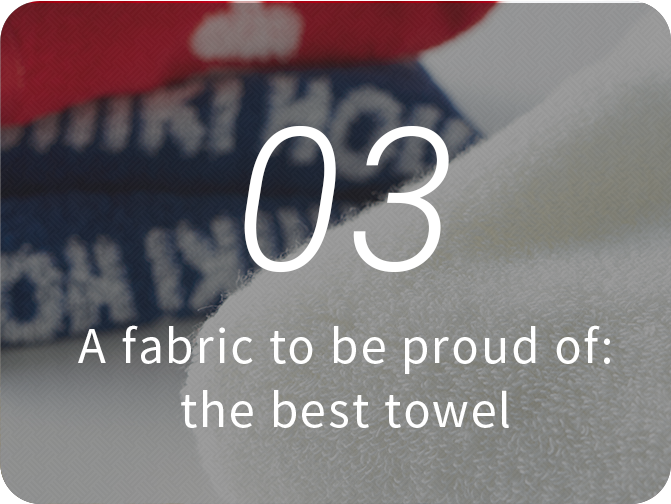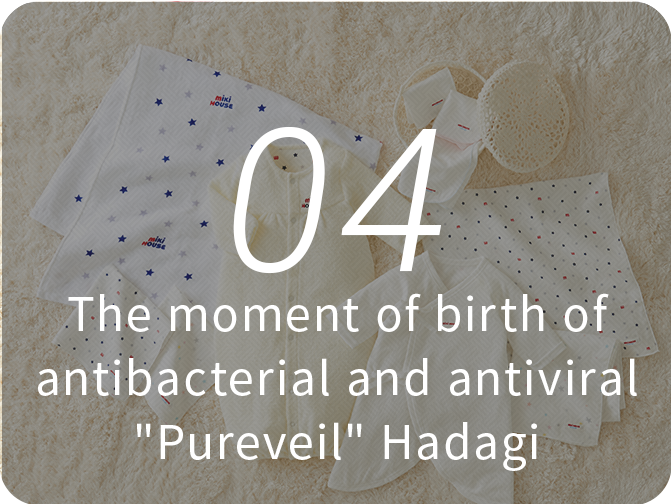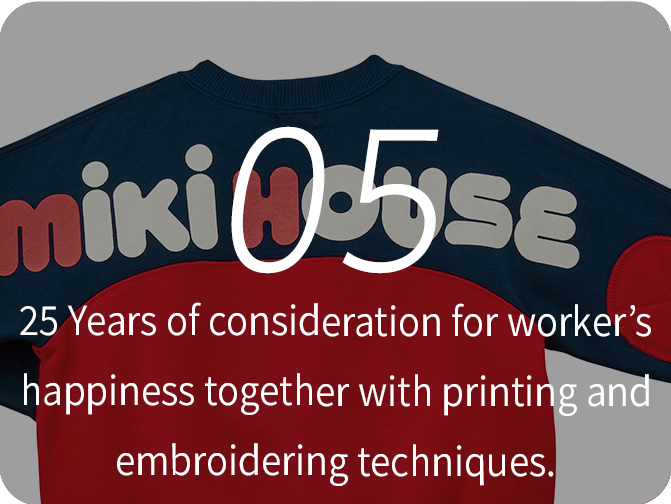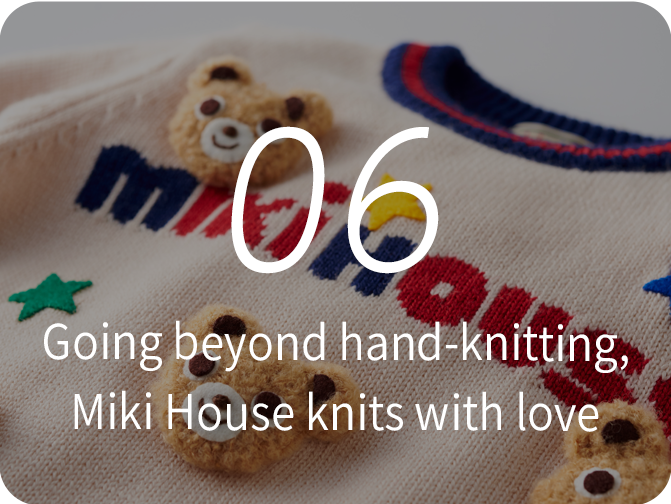25 Years of consideration for worker’s happiness together with printing and embroidering techniques.
Printing and embroidery are important factors in the creation of the lively “MIKI HOUSE Style” that customers have come to love in our children’s clothing.
An item that has been loved for 40 years or so and is one of the most recognizable styles representative of MIKI HOUSE’s printing techniques is the Back Logo Trainer. In celebration of the 50th Anniversary of the founding of MIKI HOUSE, we will be releasing a new color including a reworking of the MIKI HOUSE logo.
The large printed logo printed on the back is a perfect representation of the history of the brand. In addition to the Back Logo Trainer, we would like to focus on Yoshiko Okamura, former senior managing director of Tanaka Embroidery Co., LTD. For approximately 30 years, she commanded the processing technologies and production of printing and embroidery which uniquely express the worldview of MIKI HOUSE.



